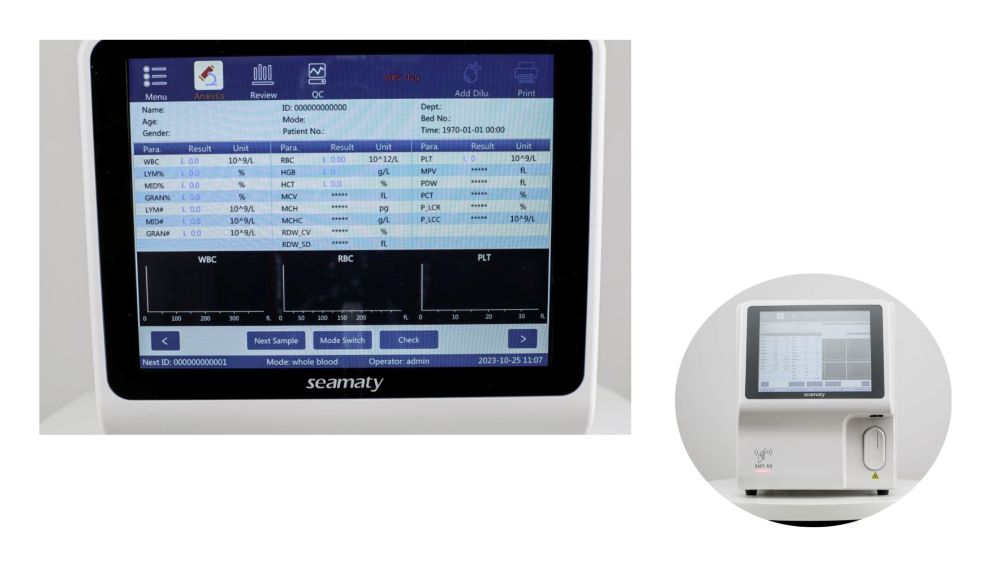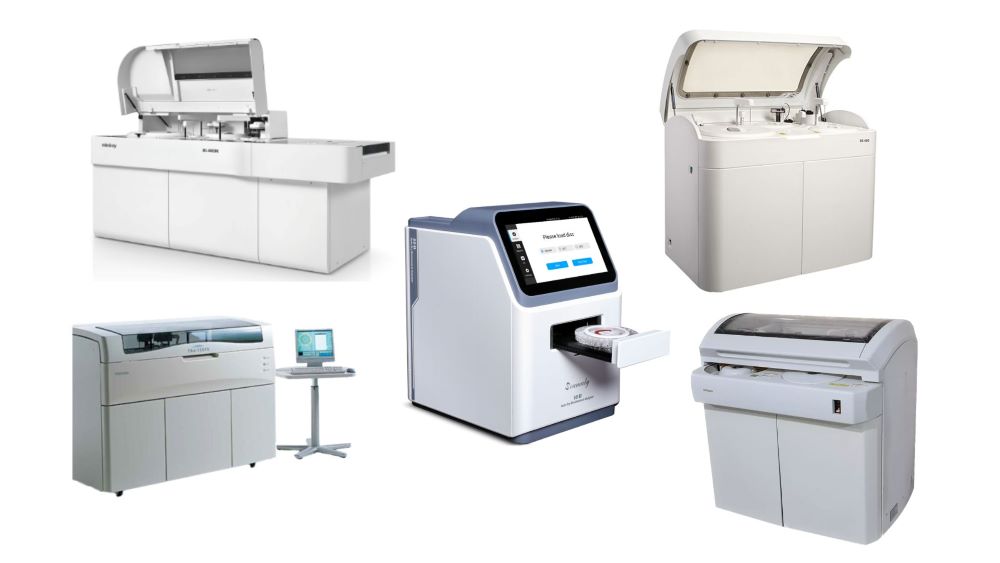release time:2024-04-11 15:14:18
In today's healthcare landscape, accurate and efficient blood analysis is crucial for timely diagnosis and treatment. The 5-part auto hematology analyzer is a powerful tool that has revolutionized the way we assess a patient's complete blood count (CBC). Compared to its 3-part hematology analyzer, the 5-part analyzer provides a more detailed breakdown of white blood cells, including the detection of eosinophils and basophils. This enhanced differentiation capability offers valuable insights into various disease states.

The 5-part hematology analyzer utilizes a combination of sophisticated technologies to categorize and count blood cells. Here's a breakdown of the four main principles employed:
By simultaneously analyzing all three parameters, the VCS technology accurately differentiates various white blood cell types.
This combined approach provides a two or three-dimensional image on the analyzer's screen, allowing for clear cell classification.
This method employs a sheath flow solution to dilute the blood sample and preserve the natural state of the cells. A laser beam is used to analyze light scattered by the cells at four different angles. Since the amount of scattered light depends on factors like cell size, internal structure, and nucleus-to-cytoplasm ratio, this technique allows for comprehensive leukocyte classification.
The 5-part auto hematology analyzer is a technological marvel that offers a wealth of information about a patient's blood cell makeup. By understanding the principles behind this device, we can appreciate its role in providing valuable insights for improved patient care.

2024-06-20
Explore automatic biochemistry analyzers: advanced instruments revolutionizing healthcare diagnostics. Discover their principles, applications, top brands, and key considerations in choosing the right analyzer for efficient healthcare solutions.

2022-04-26
Biochemical testing is the earliest developed and most mature in vitro diagnostic segment. Also known as Clinical Chemistry, it is commonly used for basic tests such as blood glucose, blood lipids, cholesterol, liver function, kidney function, etc.

2021-10-08
1. The brand of biochemistry analyzer: The creation and cultivation of a brand is not something that happens overnight. If a medical device manufacturer can establish a long-lasting brand, it is more important to do all the work in every aspect. Choose a big brand of biochemical machines can be guaranteed in the quality of the product and after-sales service.